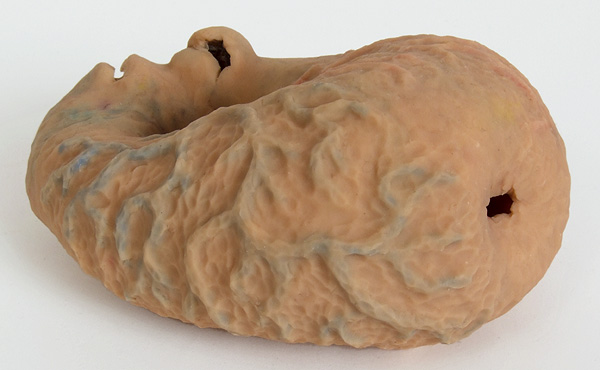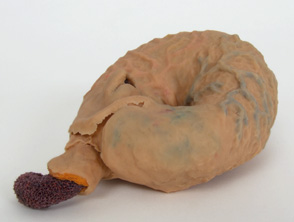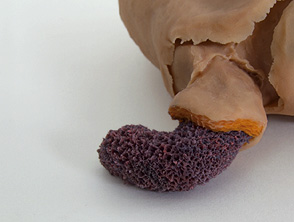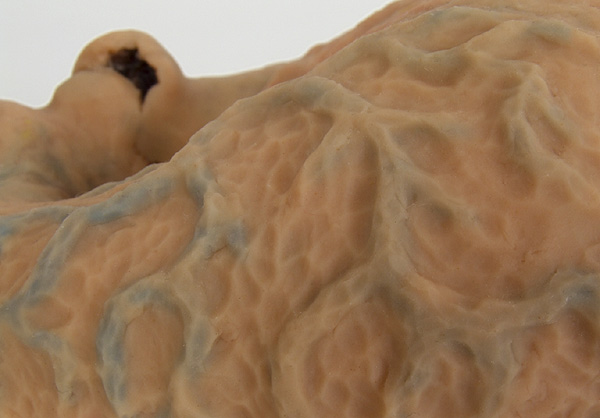im wasser lebender kopf
head that occurs in water




bei cephalus aquatilis handelt es sich um eher schmächtige organismen. der körper besteht zum grössten teil aus dem kiemendarm. am grund von seen und fliessgewässern liegen die wesen in rasenbildenden gruppen nah beieinander. sie sind meist ringförmig und verändern ihre form beständig. die vermehrung vollzieht sich indem sie teile ihres körpers durch abschnüren trennen. schliesslich verbindet lediglich ein feiner faden diese teile mit dem körper. normalerweise werden die wesen für ihr gesamtes leben nicht adult, sondern verbleiben im larvenstadium unter wasser (aquatil) ohne zu metamorphosieren. sinkt der wasserspiegel im tümpel, see o.ä., können sie sich in anpassung an ihren lebensraum zu landformen entwickeln. nach der auf diese weise vollzogenen metamorphose sind sie jedoch nicht mehr fortpflanzungsfähig.
the organism cephalus aquatilis is rather frail than it is stout. the body consists mainly of the gill-colon. they lay very close to each other in groups which resemble lawns, at the bottom of lakes and flowing water. they are usually ring-shaped and can continually change their shape. they reproduce by tying off and detaching parts of their body. these parts acquire the shape of barbells, until one ball is only connected with the body through a thin thread. they never reach adulthood, but remain larvae all their lives and live under water permanently (aquatic). they grow up as larvae but never go through metamorphosis. if the water level in the pond, lake, etc. declines, they can turn into land creatures in order to adapt to their surroundings. after the metamorphosis is completed though, they can no longer reproduce.

